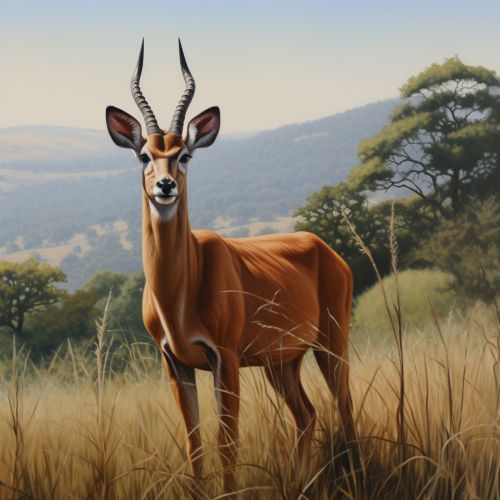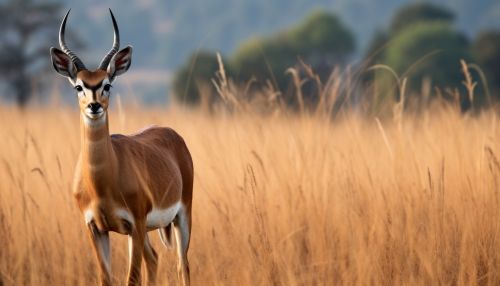Impala
Taxonomy and Evolution
The impala (Aepyceros melampus) is a medium-sized antelope found in eastern and southern Africa. The name "impala" comes from the Zulu language meaning "gazelle". They are classified under the family Bovidae and are part of the order Artiodactyla, which also includes other ungulates like deer and bovines. The impala is the only member of the genus Aepyceros and is placed in the subfamily Aepycerotinae.
Impalas evolved during the late Miocene period, approximately 7.6 million years ago. The two subspecies recognized today, the common impala (Aepyceros melampus melampus) and the black-faced impala (Aepyceros melampus petersi), diverged about 1.7 million years ago.


Description and Anatomy
Impalas are slender, agile creatures, with long, slender legs and a body built for speed. They are known for their remarkable leaping ability, which allows them to evade predators. Adult males, known as rams, stand 75–92 cm (30–36 inches) tall at the shoulder and weigh 40–76 kg (88–168 lbs). Females, or ewes, are slightly smaller and lighter.
The impala's coat is a light, reddish-brown, which helps it blend into its surroundings in the African savannah. Males have long, lyre-shaped horns, which can reach up to 90 cm (35 inches) in length. These horns are used in combat with other males during the mating season. The underbelly, chin, lips, and the insides of the ears are white. Impalas have a distinctive black stripe running from the middle of their tail to their rump.
Impalas have a specialized digestive system typical of many ruminants, a group of mammals that includes cattle and sheep. This allows them to efficiently process a diet of leaves, grass, and other plant material.
Habitat and Distribution
Impalas are found in savannas and thickets in eastern and southern Africa. They are most common in Botswana, Zimbabwe, Zambia, Mozambique, Namibia, and South Africa. They prefer areas that are close to water sources, as they need to drink regularly. Impalas can adapt to changes in their environment and can survive in both woodland and savannah ecosystems.
Behavior and Ecology
Impalas are both grazers and browsers, feeding on grasses, leaves, and shoots depending on the season. They are diurnal animals, most active during the cooler parts of the day, dawn and dusk. Impalas are known for their social behavior. They live in large herds, typically composed of females and their offspring, while males form separate groups.
During the breeding season, or rut, males become territorial. They use a combination of scent marking, vocalizations, and physical combat to defend their territories and gain access to females. Impalas have a gestation period of about six to seven months. Females usually give birth to a single calf, which is hidden away in vegetation for the first few weeks of its life.
Impalas have a variety of predators, including lions, leopards, cheetahs, hyenas, and wild dogs. Their primary defense is their speed and agility, with the ability to run up to 60 km/h (37 mph) and leap up to 3 m (10 ft) in the air.
Conservation
Impalas are listed as Least Concern by the International Union for Conservation of Nature (IUCN). They are widespread and abundant throughout their range. However, like many African wildlife species, they face threats from habitat loss and illegal hunting.
